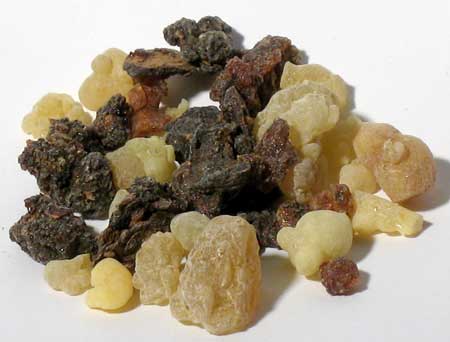
© Superfood Marine PhytoplanktonRaw Frankincense
Frankincense may bring to mind thoughts of the three wise men, one of whom brought this valuable tree sap as a gift for the newborn baby Jesus. According to recent research, this ancient commodity, long considered to be worth its weight in gold, may actually be a cure for cancer.
Jeremy Howell, a reporter at the BBC,
recently set out on a trek to learn more about frankincense and to find out whether or not the time-honored substance truly has anti-cancer characteristics. After an 11-hour drive from Oman's capital, Muscat, Howell arrived in the country's "Land of Frankincense" where he quickly discovered some fascinating things about frankincense.
Frankincense is sap derived from a tree called Boswellia sacra that grows in the Dhofar region of Oman. The warm winters and rainy summers there create perfect conditions for the tree, which grows wild all over the region.
According to Mohammed Al-Shahri, a local tour guide, frankincense has been extracted, used, and sold in that region as far back as 7,000 B.C. Passed on from generation to generation, the traditional way of extracting frankincense is to cut the bark of the tree, extract its impurities through the first sap, and return days later to extract pure sap. The final product comes in an array of colors including yellow, bright green, brown, or even black.
Families in the Dhofar region made their livings by exporting frankincense around the world. Camels would carry it to Egypt where it would be shipped from ports to Europe and the Far East. Some religious traditions would burn frankincense as an offering, lending explanation for why one of the wise men brought it as a gift for Jesus.
This Omali type of frankincense was a popular commodity back in the day, but today it is hardly exported. This is partly due to the fact that little Omali frankincense is even produced anymore. Most of the younger generation has left the region to pursue jobs in government or with oil companies, leaving only three people who still produce the sap.
However, recent research by scientists showing that Omali frankincense contains an agent that halts the spread of cancer may reignite its popularity. According to immunologist Mahmoud Suhail,
frankincense resets the DNA code that has been corrupted by cancer cells and reprograms the correct code back into the cell.
Frankincense also effectively separates the nuclei of cancer cells from their cytoplasm bodies which stops cancer cells from reproducing themselves and the corrupted DNA codes. Because frankincense attacks only malignant cells while leaving health cells alone, it could revolutionize cancer treatment protocols.
Currently, scientists are working to isolate the agent within frankincense that fights cancer and trials are currently being conducted to identify which one it is.

This Studies are indicating frankincense to be a strong resistant-stimulant with some claiming that frankincense has the ability to repair DNA.
[Link]